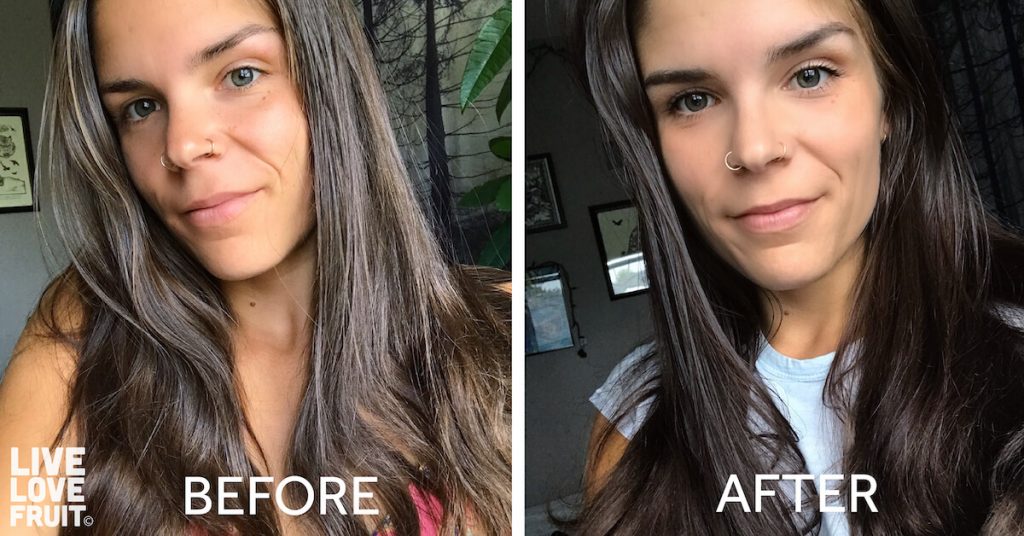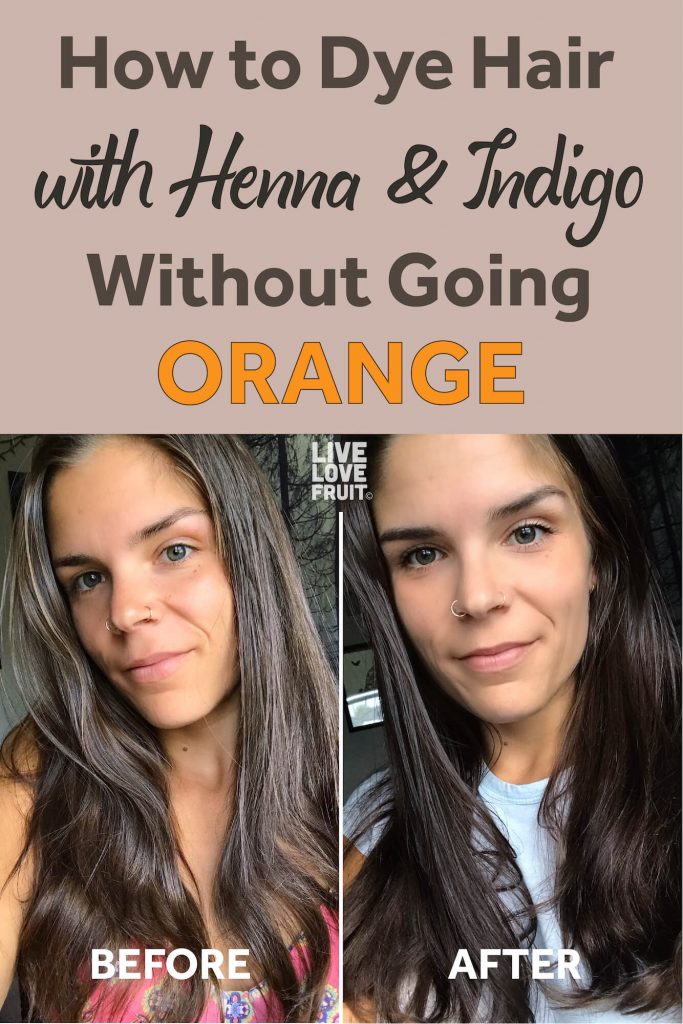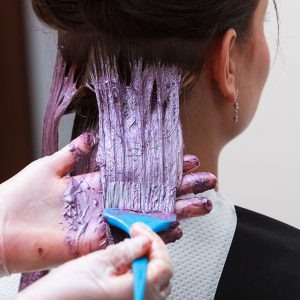
If you’re looking for an alternative to chemical-laden hair dyes – or if you just want shiny, bouncy hair – then henna might be exactly what you’re looking for.
Contrary to popular belief, henna will not turn your hair orange — when used correctly, of course, and with some additional ingredients that help offset this effect.
Learning how to dye your hair with henna and indigo is a great method of taking control of the health of your own hair without having to depend on harsh chemical dyes.
But first, let’s take a look into how dangerous conventional hair dyes are, and why you should avoid them at all costs.
Cancer and Hair Dye
Hair dyes are highly problematic, especially when it comes to increased cancer risk. According to cancer.gov, “over 5,000 different chemicals are used in hair dye products, some of which are reported to be carcinogenic (cancer-causing) in animals.”
Before a color can penetrate the hair shaft, the cuticle (protective coating) must be opened so that chemicals can change the natural pigment molecules of the hair shaft. In order to achieve this effect, harsh chemicals must be utilized.
The most common chemical in hair dye products today are phenylenediamines, which vary depending on the desired color.
These ingredients, along with others like coal tar, formaldehyde, eugenol (fragrance), ammonia, peroxide, and lead acetate are major body irritants. They negatively impact our endocrine, immune, lymphatic and nervous systems.
A study conducted at Harvard University found that women who dyed their hair one to four times a year had a 70% increased risk of ovarian cancer (compared to women who never dyed their hair). This study also found that women who used hair dye five times or more per year had twice the risk of developing ovarian cancer compared to women who never used hair dye.
Other studies suggest that hair dye use is positively associated with increased risk of developing non-Hodgkin’s lymphoma, and multiple myeloma, anywhere from 2-4 times over a non-user.
If that’s not convincing enough, Yale researchers found in 2008 that women who used hair dye 6-9 times a year had a 60% higher risk of developing lymphocytic leukemia. Yikes!
Thankfully, safer alternatives exist.
Henna Hair Dye
My go-to product for color correcting my hair after the sun bleaches it all summer is Morrocco Method Dark Brown Henna.
I have been using this product for a couple years now, and the results it delivers are outstanding!
The cool thing about henna is that it is 100% natural, and doesn’t destroy your hair.
Synthetic hair dye opens up the hair’s cuticle, which is the outer layer of our hair that gives shine. Dying hair will often reduce shine, and leave the hair feeling more brittle and damaged (especially if routinely dyed year after year).
Henna, on the other hand, simply stains the outside of each individual hair, and gradually fades over a period of one to six months. Henna is a dye prepared from the plant Lawsonia inermis, also known as hina, or “henna”.
My hair gets highlighted blonde in summer, so I use dark brown henna mixed with indigo to return it back to its original color once summer has passed.
Indigo is a natural dye that is obtained from the plant Indigofera tinctoria. Indigo is rich, and dark blue in color. When combined with henna, the dye gives your hair a rich brown color.
How to Dye Your Hair with Henna and Indigo
If you want to learn how to dye your hair with henna and indigo without going orange, you’ll need to get some amla powder. Amla helps cool down the red and orange tones, and increases the amount of time the henna is on your hair. Amla also adds moisture and softness to your hair (bonus!).
I wanted to dye my hair dark brown, but Morrocco Method also has options for dying the hair light brown, medium brown, light blonde, red and black.
If you are using amla powder to reduce orange and red tones in your hair, do not use black tea, lemon juice or apple cider vinegar (ingredients that are used without the addition of amla).
Here is the instructions I used to dye my hair using the Dark Brown Henna from Morrocco Method with Amla Powder. It might seem a little extensive, but so worth it!
- Make sure you set aside at least four hours on a specified day to dye your hair with henna. I always leave mine on for the longest period of time recommended (4 hours).
- The night before you are going to dye your hair, empty out the entire contents of the henna into a bowl. Add 1 tablespoon amla for dark brown hair (different amounts required for other hair colors) and stir in water until you get a consistency that is similar to yogurt. Put saran wrap or beeswax wrap on top to cover, and let sit for 8-12 hours.
- The next morning, empty the bag of indigo powder into a separate bowl, and combine with water until you get a yogurt-like consistency.
- Combine the indigo mixture with the henna mixture, and stir well.
- Comb out your hair, and make sure you put some oil around your ears and hair line. This can be any type of oil, but I suggest either jojoba or Morrocco Method’s Euro Oil. This will prevent the dye from dying your skin.
- Put on a pair of gloves, and section off parts of your hair. I just used my gloved hands to scoop up, and rub the henna into small sectioned off areas of my hair. I did this until my entire head was covered in henna!
- Put your hair up in a hair elastic, and then put on a shower cap.
- Let the dye sit for 1-4 hours. I let mine sit for the longest recommended time – four hours.
- Rinse out the dye until you see the water run clear. Do not put soap in your hair. Just rinse it out to your best ability. You can then add some more Euro Oil to your hair while it is still damp to add even more moisture and shine to your hair when you wash it out the next day.
- The following day, you can shower and wash your hair using a gentle shampoo and conditioner.
That’s all! You might notice that your hair is a little darker in the beginning compared to a week after dying, but this is normal. My hair almost looks black the day after dying, but this quickly diminishes after a second and third washing, and that’s really when the dark brown color starts to develop.
As I always want to share with you what works for me, I partnered up with Morrocco Method to make it easier for you to try the same henna I’ve been using. I was able to negotiate a special deal just for you.
Get an exclusive discount when you use the code “LiveLoveFruit15” at checkout here.









Hi
I would like to use henna to cover My Gray hair. Could you suggest me what can i use? And how much?
Thanks
Hi Lilly – the only henna I use is by Morrocco Method. I would suggest contacting them and asking regarding grey hair!
How much henna do you use? I could two bags because I have long hair so I’m wondering if I would add 2 tablespoons of alma or if thats still 1 tablespoon.
Hi Summer – I go based on the instructions by Morrocco Method. If you need to double what they provide in a kit, then you would need to double the amla powder.
Hey! thank you for this! have you updated your henna routine? lie by adding an egg?
Hi Crystal – my routine stays the same. Nothing has changed, and I would not add an egg, no.
Hello! You said you still get your hair highlighted in the summer, is their a product you use for that that avoids a lot of the chemicals in hair bleach?
My hair gets highlighted by the sun in summer – it’s just what happens to my hair naturally. I never dye my hair with bleach. Only henna.
Do you add indigo to keep brassiness away?
Yes, and the amla keeps the orange out as well.